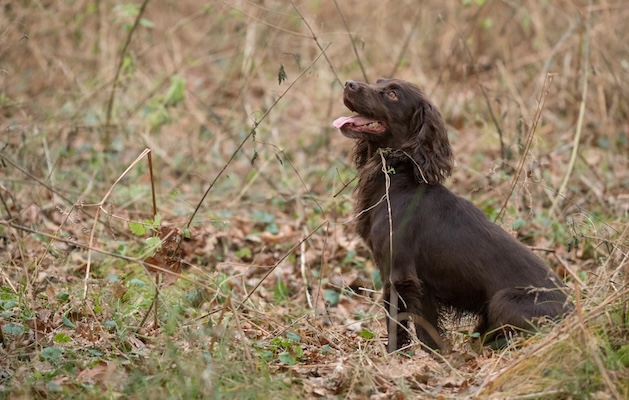It is important to recognise gundog faults and put a stop to them no matter what a defensive beater or picker-up may tell you about 'all that being just for trialling people'. The truth is without good dogwork, sporting shooting is impossible.
1. Running in
Instead of waiting for a command to retrieve when a bird has been shot, the dog runs straight in to the fall and either retrieves the dead quarry or starts hunting for the wounded quarry. In extreme cases the dog will run in just at the sound of the shot.
2. Chasing
When the dog finds and flushes live quarry, it chases it immediately rather than sitting (dropping to flush) and waiting for the quarry to be shot. A dog that chases ground game makes it impossible for the gun to shoot.
3. Pegging
Pegging usually follows on when a dog is allowed to chase – if it catches up with the live game it will ‘retrieve’ it unshot. Pegging can also occur when game is sitting very tight (usually due to wet weather) and does not flush. This is a minor fault as long as the game remains uninjured.
4. Hard mouth
The dog crushes the ribcage of the bird during the retrieve, or even shakes and kills the game. Thanks to selective breeding few gundogs are born with a hard mouth now, but some develop it if allowed to chase or peg regularly. Some good gundogs become rough with game in the later stages of their careers. (Read more on when to retire a gundog.)
5. Switching
The dog is returning from a retrieve carrying game when it comes across more fallen game and drops its first retrieve in order to pick-up the other. This fault develops when a dog is allowed to run in unchecked. (Read about gundog injuries.)
6. Speaking
The dog barks (or in some cases even gives tongue like a hound) either while on the peg during the drive, when flushing game or generally during the shooting day.
7. Gun-shyness
The dog cowers or runs away at the sound of gunshot or, to a lesser degree, becomes nervous and ‘sticky’ when asked to flush game. Though few modern spaniels or retrievers are gun-shy the problem is more often met with in pointer/setter breeds, especially if a gun has shot too close to them early in their careers.
This article was originally published in 2014 and has been updated.





